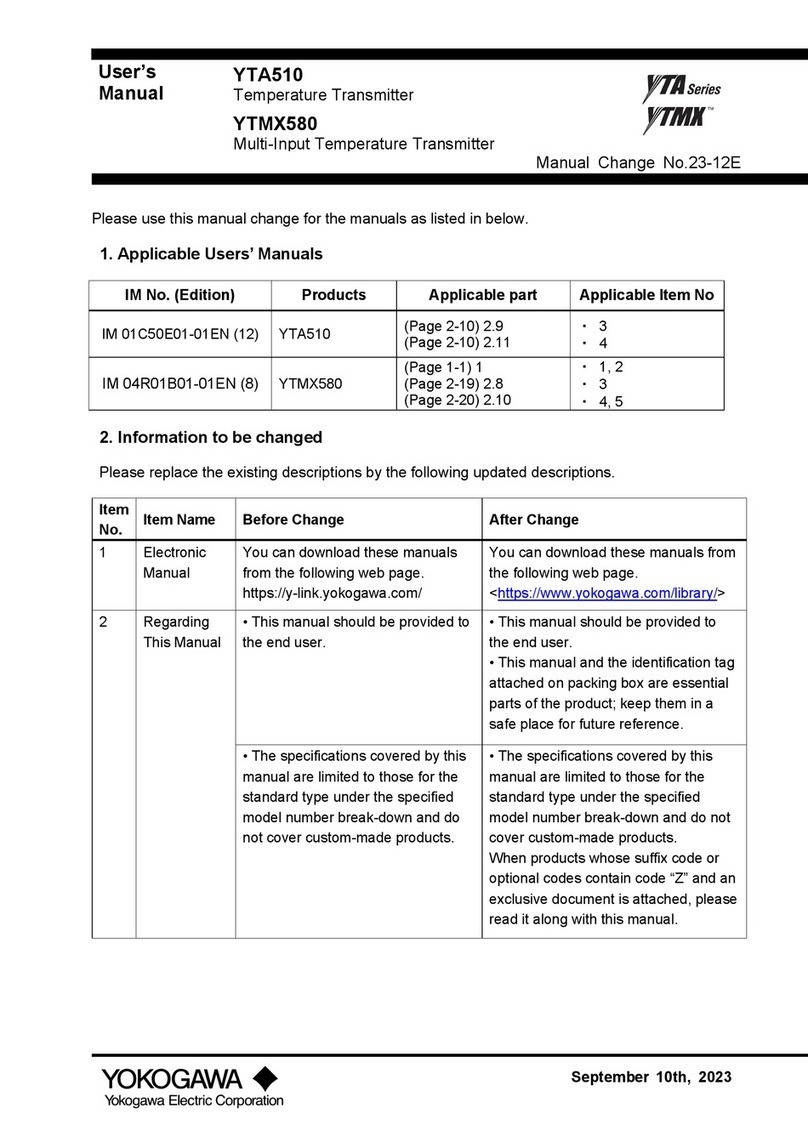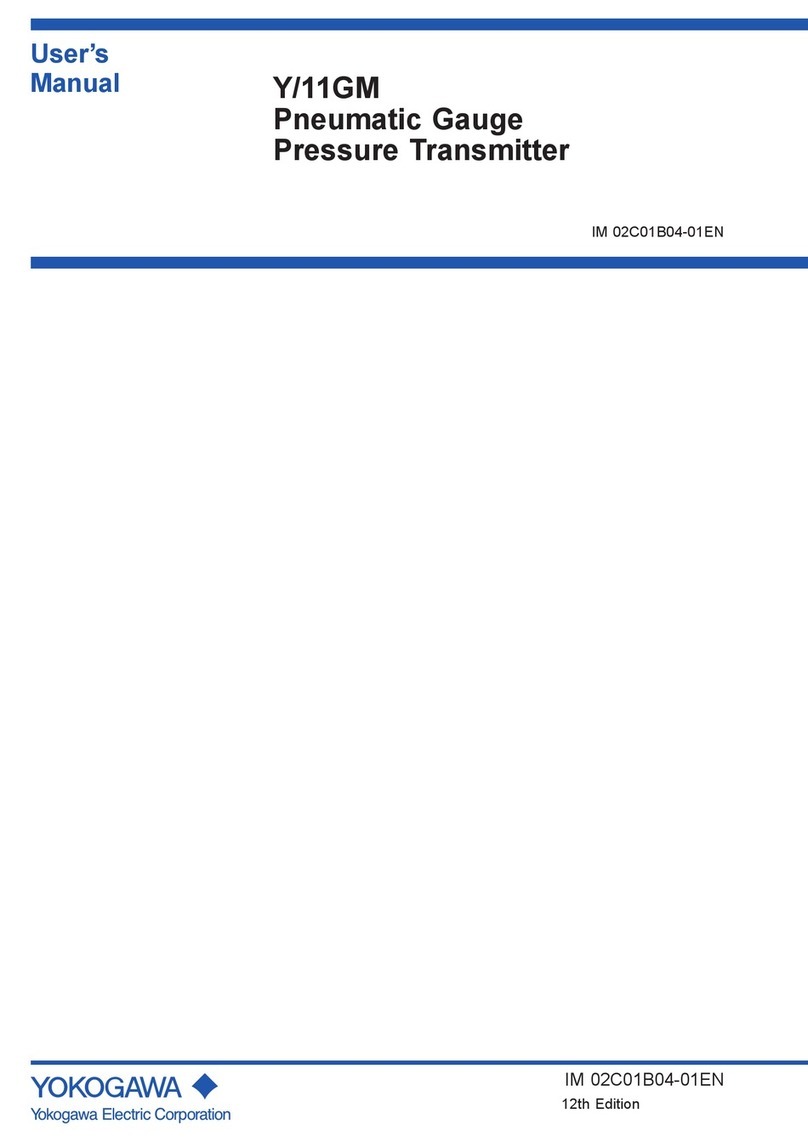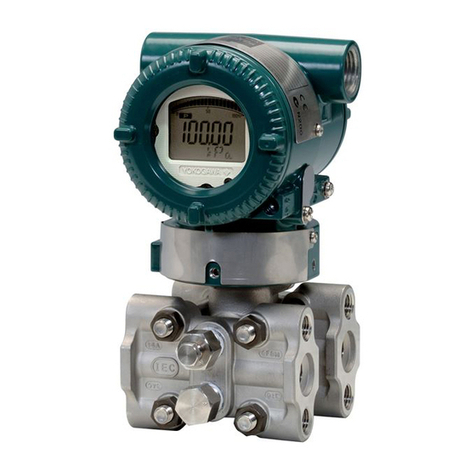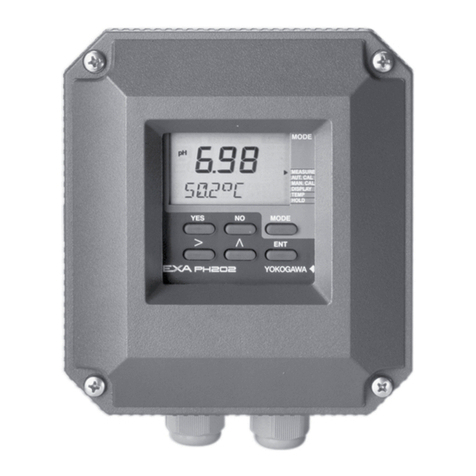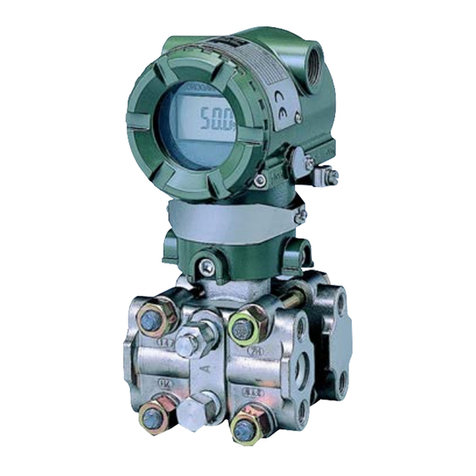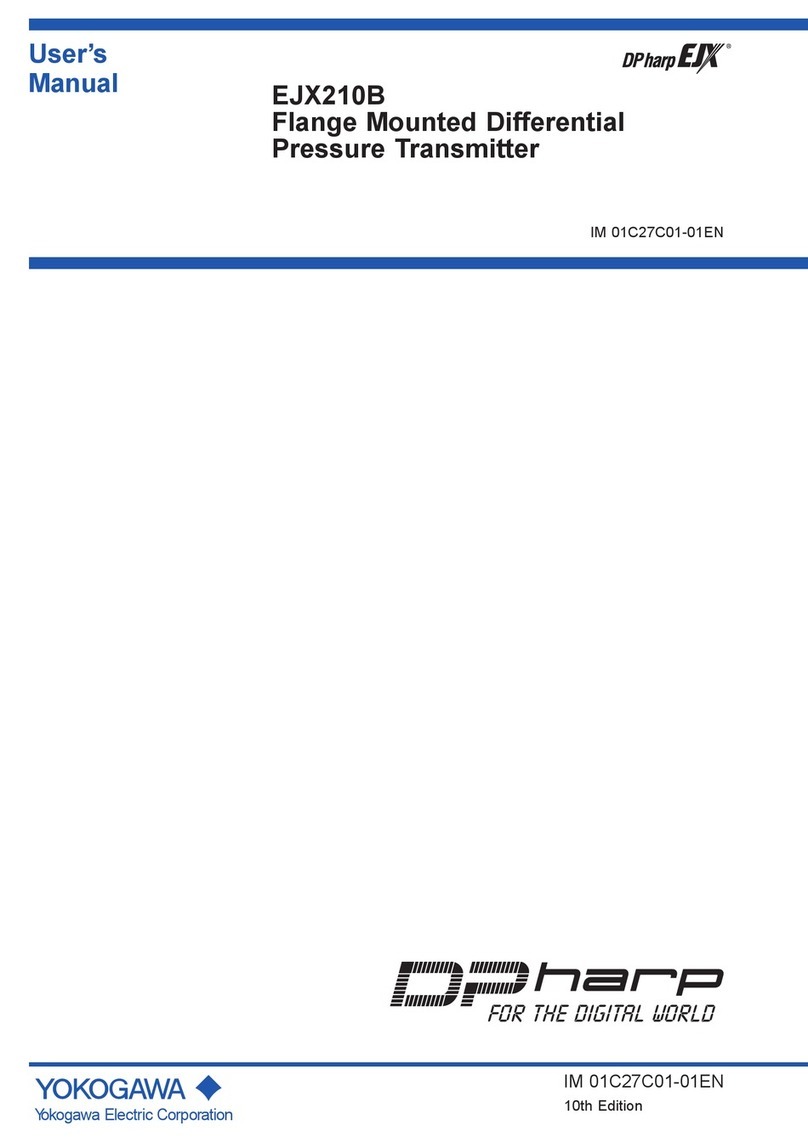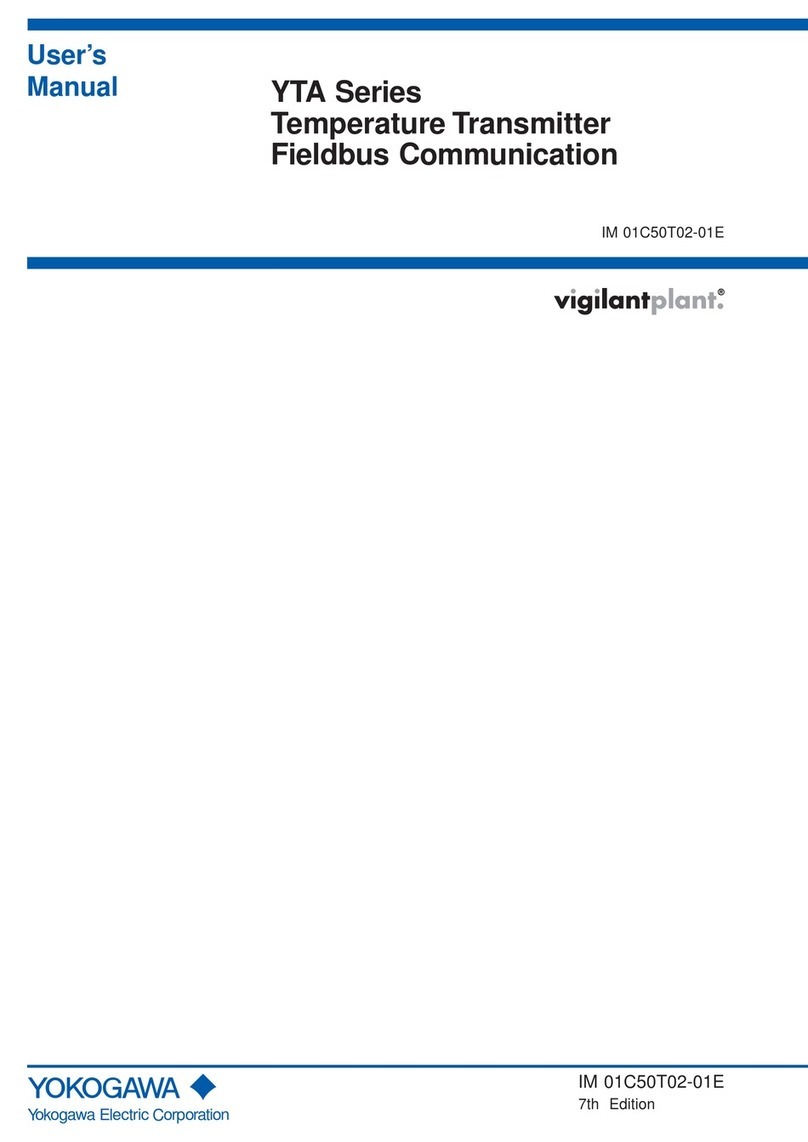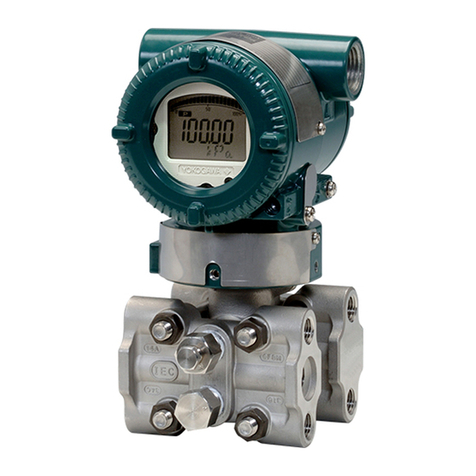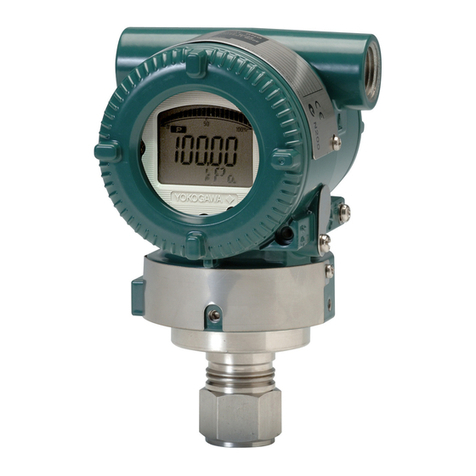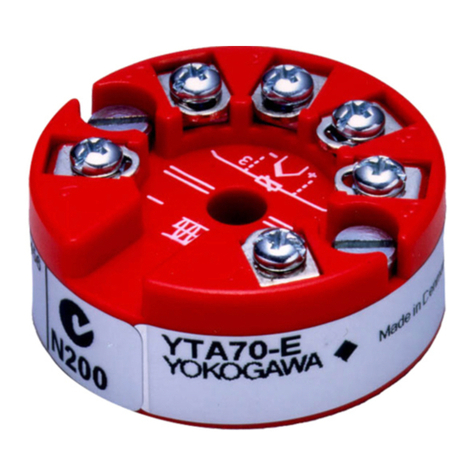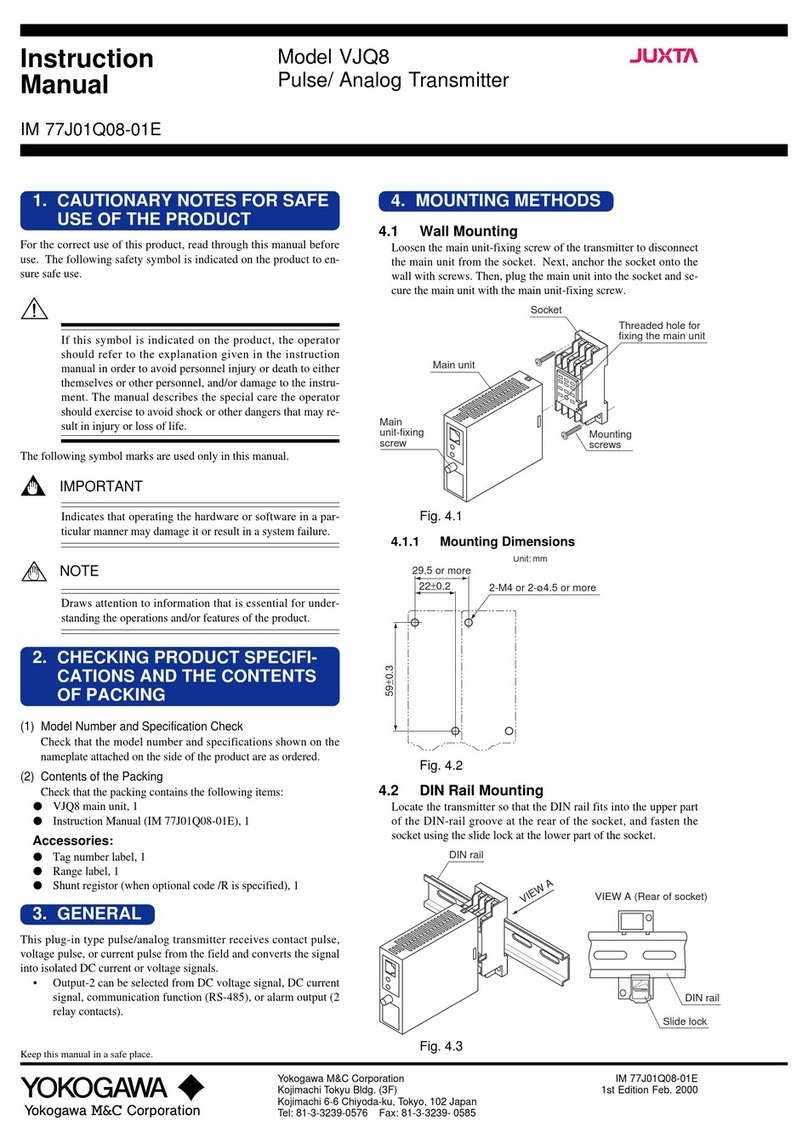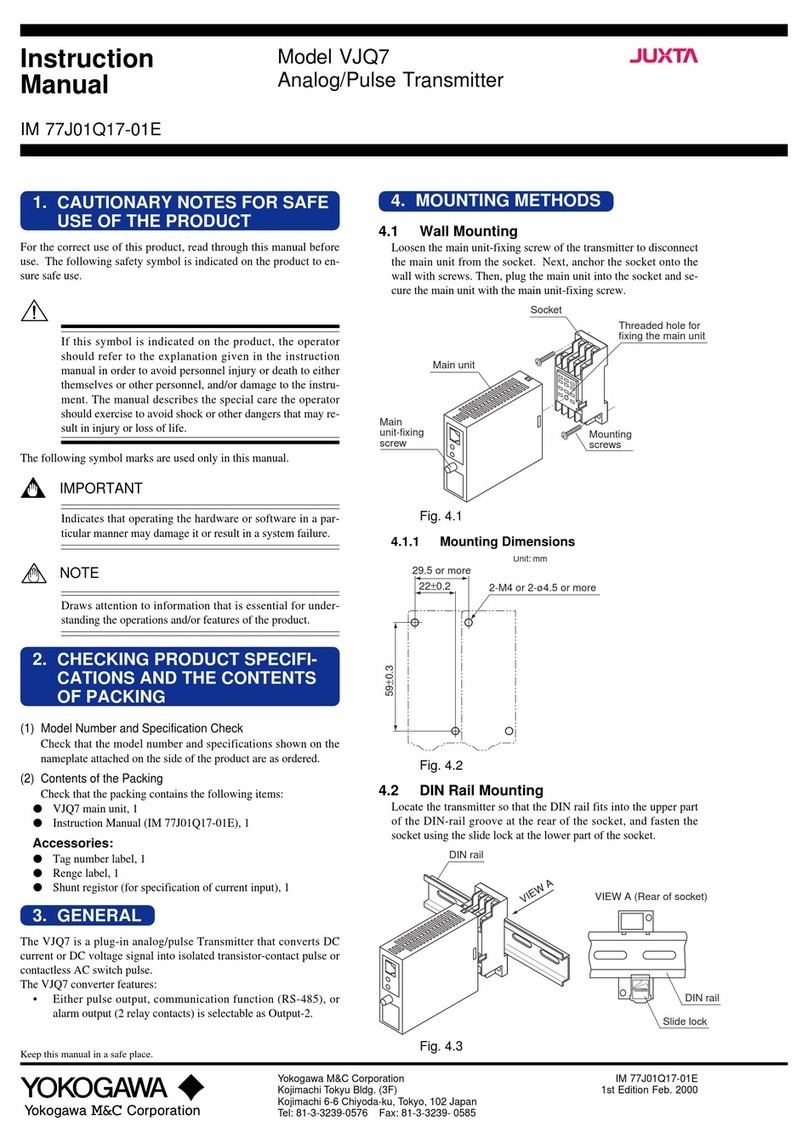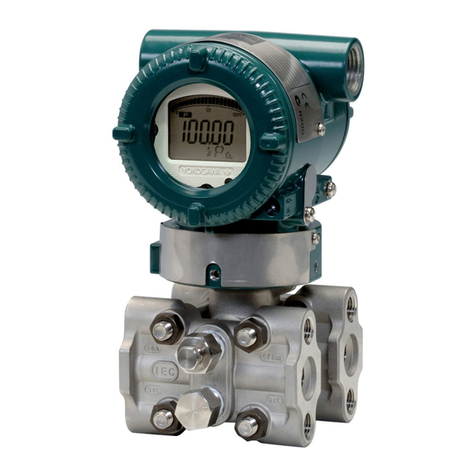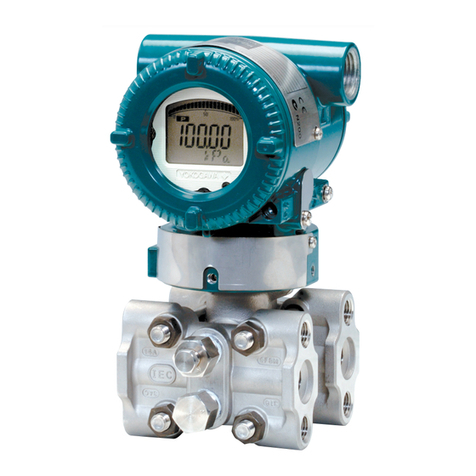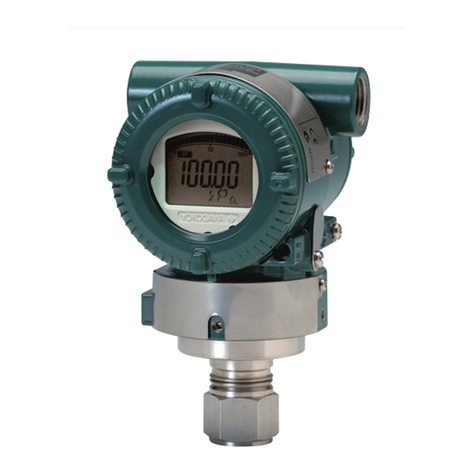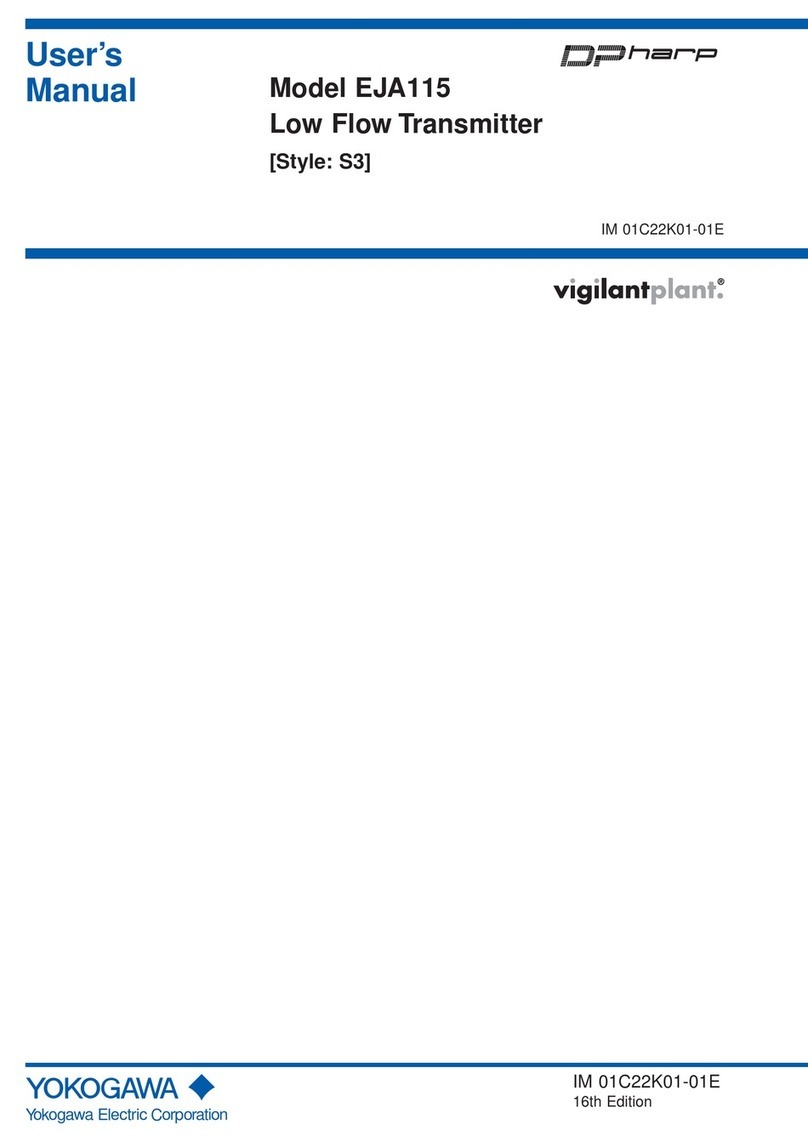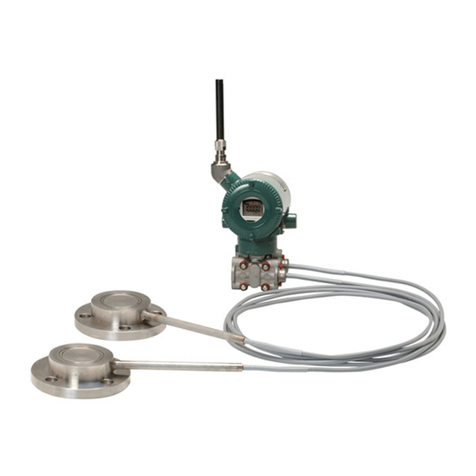
<1. Introduction> 1-3
IM 01C27B01-01EN
(c) Maintenance
• Pleasecarryoutonlythemaintenance
proceduresdescribedinthismanual.Ifyou
requirefurtherassistance,pleasecontactthe
nearestYokogawaoce.
• Careshouldbetakentopreventthebuildupof
dust or other materials on the display glass and
thenameplate.Tocleanthesesurfaces,usea
soft,drycloth.
(d) Explosion Protected Type Instrument
• Users of explosion proof instruments should
referrsttosection2.8(Installationofan
ExplosionProtectedInstrument)ofthismanual.
• Theuseofthisinstrumentisrestrictedtothose
whohavereceivedappropriatetraininginthe
device.
• Takecarenottocreatesparkswhenaccessing
theinstrumentorperipheraldevicesina
hazardouslocation.
• Repairormodicationtothisinstrumentby
customerwillcausemalfunctionofexplosion
protectfunctionandhazardoussituation.Ifyou
needtorepairormodication,pleasecontact
thenearestYokogawaoce.
(e) Modication
• Yokogawawillnotbeliableformalfunctionsor
damageresultingfromanymodicationmade
tothisinstrumentbythecustomer.
(f) Product Disposal
• The instrument should be disposed of in
accordancewithlocalandnationallegislation/
regulations.
(g) Authorized Representative in EEA
• InrelationtotheCEMarking,Theauthorized
representativeforthisproductintheEEA
(EuropeanEconomicArea)is:
YokogawaEuropeB.V.
Euroweg2,3825HDAmersfoort,
The Netherlands
1.2 Radio Wave
IMPORTANT
- Thisinstrumentisequippedwithawireless
modulewhichisdesignatedasacertication
ofconstructiontypeasawireless
facilityfor2.4GHzbandlow-powerdata
communicationsystemoftheRadioAct.
Referto2.12“RegulatoryCompliancefor
RadioandTelecommunication”fordetail.
- Duetothedesignatedcerticationof
constructiontype,usersmaybesubjectto
legalpunishmentincaseof:
- Disassemblingormodifyingthewireless
module or antenna in this instrument
- Peelingothecerticationlabelattached
tothewirelessmoduleinthisinstrument
- Preventinginterferencewithotherwireless
stations
Theoperatingfrequencybandwidthofthis
instrument may overlap the same range
asindustrialdevices,scienticdevices,
medicaldevices,microwaveovens,licensed
premisesradiostationsandnon-licensed
speciedlow-powerradiostationsformobile
objectidenticationsystemsusedinfactory
productionlines.
Before using this instrument, ensure that
neitherapremisesradiostationnorspecied
lowpowerradiostationformobileobject
identicationsystemsisinusenearby.
Ifthisinstrumentcausesradiowave
interferencetoawirelessstationformobile
objectidenticationsystems,promptly
changethefrequencybeingusedorturn
othesourceofradiowaveemissions.
Then,contactaYokogawaoceregarding
countermeasurestopreventinterference,
suchassettinguppartitions.

